Galeria de retlaw snellac
the world part 1
Created with Admarket's flickrSLiDR.

india - ladakh
Thiksey Gompa of Ladakh is situated at a distance of approximately 18 km from the town of Leh. One of the most beautiful monasteries of Ladakh, it belongs to the Gelukpa Order of Buddhism. Sherab Zangpo of Stod got the Thiksey Monastery built for the first time, at Stakmo. However, later Spon Paldan Sherab, the nephew of Sherab Zangpo, reconstructed the monastery in the year 1430 AD. The new monastery was sited on a hilltop, to the north of Indus River.
Thikse Monastery Ladakh houses a temple, known as Lakhang Nyerma. This temple, built by Rinchen Zangpo, the Translator, is dedicated to Goddess Dorje Chenmo. A huge temple in its time, today it stands mostly in ruins. Apart from this temple, there are a number of other sacred shrines inside the monastery complex. The monastery also has a rich collection of numerous valuable artifacts and ancient relics.
Thiksey Gompa serves as the residence of approximately eighty monks. It has been served, for quite a long time, by the successive reincarnations of the Skyabsje Khanpo Rinpoche. The monastery also plays the host to Gustor ritual, organized from the 17th to 19th day of the ninth month of the Tibetan calendar. Sacred dances also form a part of this ritual, which takes place on an annual basis.
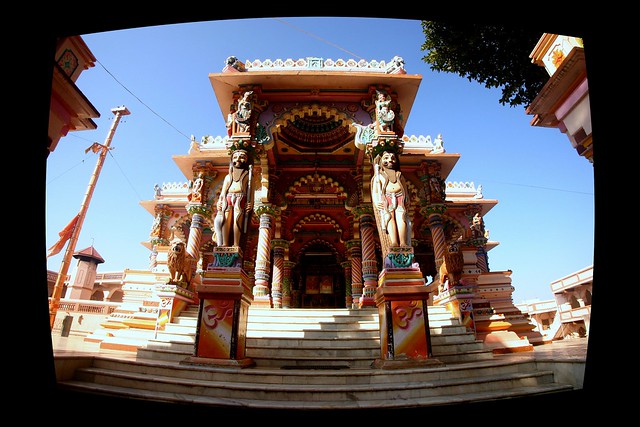
india - gujarat
Rabari temple (Dubhrej village).
Rabaris are devout Hindus. According to their myth of existence they were created by Parvati, the consort of Lord Shiva, who wiped the dust and sweat from Shiva as he was meditating and fashioned the very first camel from the dust balls she collected from his body. Once Shiva had breathed life into this camel, it kept running away, so Parvati fashioned a man, and the first Rabari was given life so he could mind the camel. Keeping animals has thus always been a pious occupation and Rabaris see themselves primarily as custodians of animals during their moral existence, rather than their owners. It is also their beliefs that the mother goddess presides over them. Her advice is taken about when to start out migration, and animals are commended to her care.
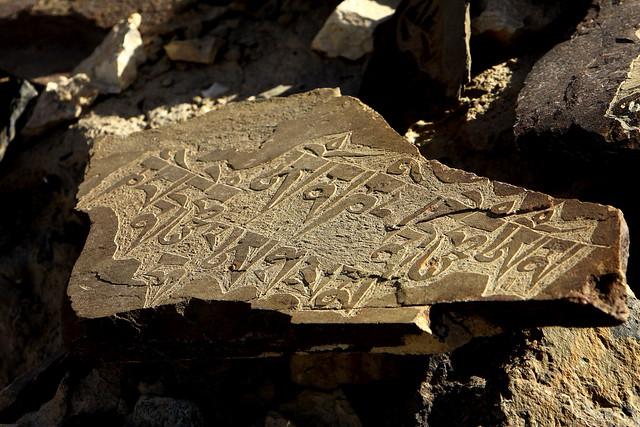
india - ladakh
Mani stone in the neighbourhood of the Diskit Monastery (Nubra valley).

russia - st petersburg
Masterpiece of the State Russian Museum of St. Petersburg (Russia).
Rivaling the Tretyakov Gallery in Moscow as the world's finest collection of Russian art, the State Russian Museum has an illustrious history that began when the fiercely nationalist Tsar Alexander III became the first Russian ruler to make a significant collection of art by Russian artists. His son, Nicholas II, decided to open a museum in his father's honour and, in 1895, bought the Mikhailovskiy Palace to house the collection. Originally called the Alexandrovskiy Museum, it was opened to the public in 1898. After the Revolution, the museum benefited massively from state confiscations of privately owned artworks, and the permanent exhibition was slowly expanded to include the palace's Rossi and Benois Wings. The museum's collection includes over 400,000 artworks covering the complete history of Russian art, from 11th century icons to work by contemporary video artists. Unlike the Tretyakov Gallery, the Russian Museum continues to exhibit art from all periods in one space.

sudan - the black pharaohs
Rocks (Nubian Desert).
Nubian Desert, region in northeastern Sudan, bounded by the Nile River valley on the west and the Red Sea Hills on the east. Primarily a rocky sandstone plateau, the Nubian Desert is a poor, remote part of the Sahara. Although scattered towns and villages exist along the Nile, life in the desert's interior is precarious and generally limited to areas close to the desert's seasonal watercourses, or wadis. The climate is hot and dry with a brief rainy season during July and August. Rainfall is scanty and averages less than 15 mm annually. The average daily temperature in June, the hottest month, is about 45° C .
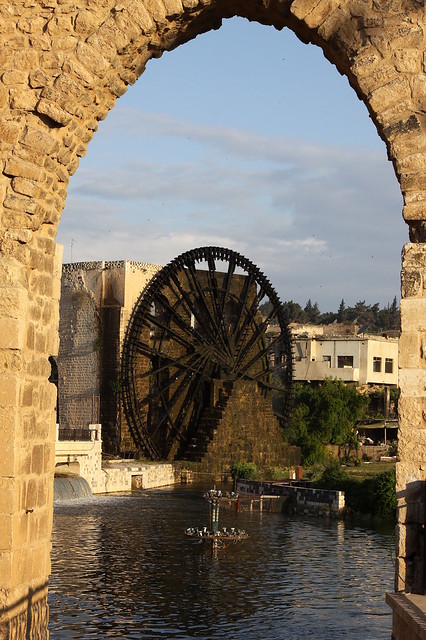
syria
The norias or waterwheels of Hama.
Hama, situated between Homs and Aleppo on banks of the Orontes river, is an important agricultural and industrial center. Except for Damascus, Hama is considered the most picturesque city in Syria and one may wish to take time to relax in its attractive gardens along river banks.
Hama has been settled since the early Iron Age. In book of Joshua, Hama is mentioned at the time when the land was divided up between the 12 tribes. It is also mentioned in Kings II as the source for the settlers the Assyrians moved into Samaria, after depopulating the cities of Holy land.
The chief attraction of Hama are the great norias (waterwheels). Originating in Byzantine times, the oldest surviving wheels date from the 13th century. The norias, which all have given names, were used to raise water from the river into aqueducts. The purpose of the wheels nowadays is purely decorative and of historical interest.
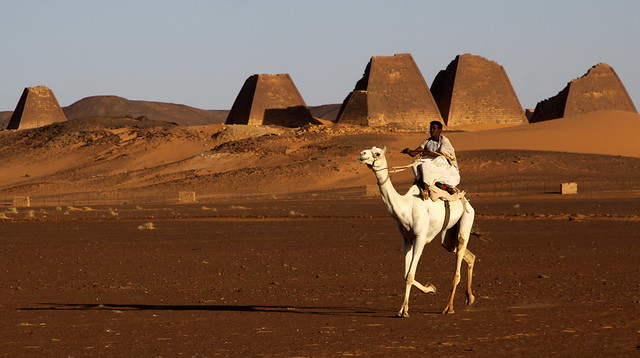
sudan - the black pharaohs
Welcome to the Meroe Pyramids.
The Meroe Pyramids are located in the North-East of Sudan near the banks of the Nile in the area commonly known as Nubia. There are close to two hundred pyramids in a relatively small area, the ancient burial site of the Merotic Kingdom (sometimes known as the Kingdom of Kush). The Pyramids are smaller than their Egyptian cousins but equally impressive due to their number. The first of the Meroe Pyramids were built about 800 years after the last Egyptian pyramids were completed. The Meroe pyramids were constructed from large blocks of sandstone. They're angled more steeply than the Egyptian pyramids.
The Kush Kingdom flourished for 900 hundred years from around 800 B.C. to 280 A.D. and held power over a vast area covering much of the Nile Delta and as far south as Khartoum. Meroe became very important as the Kingdom's center from around 300 B.C. to 280 A.D. Egyptian influence remained strong and Egyptian artisans were used to build the Meroe Pyramids to commemorate dead royalty. The dead were buried in chambers underneath the pyramids.
Excavations of the Pyramids started in mid 19th Century. Most notoriously, an Italian explorer, Giuseppe Ferlini (1800-1870), smashed the tops off 40 pyramids in a quest to find treasure. What was found was brought back to British and German museums along with samples of Meroitic writing and reliefs depicting historical events. Through the years, the pyramids have been plundered of all their wealth and left to the elements. But many of the pyramids still stand and their architectural elegance is worth a trip. Some of the pyramids have been reconstructed so you get a good idea of what they must have looked like.
See also:
www.flickriver.com/photos/waltercallens/random/
www.flickr.com/photos/waltercallens/favorites/
english.cohga.net/flickr/user/74089637@N00_1.html
www.fluidr.com/photos/waltercallens/sets
www.lurvely.com/index.php?owner=74089637@N00
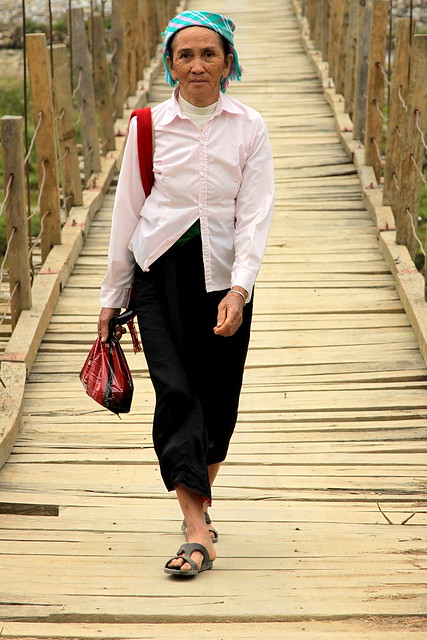
vietnam - ethnic minorities
White Thai woman on the way to her village, Phuong Bang.
The Thai worship their ancestors, the heavens, the earth, ban, and "muong". They also hold rituals to pray for good crops.The Thai live in houses built on stilts. Among the Black Thai, they prefer roofs that are shaped like a tortoise carapace with decorations called "khau cuts" at each ridge. A Thai man first lives with his wife's family for several years until the couple has a child; they then move to the house of the husband's family. The Thai organize funerals as a farewell party to see off the dead to the other world.
The Thai language belongs to the Tay-Thai Group. They have a valuable legacy of myths, legends, ancient tales, versed stories, and folksongs. They like to sing and recite the "khap" along with the accompaniment of string instruments and a dance performance. Their folk dances such as "Xoe", "Sap", "Han Khuong", and "Con" are reflection of the Thai's unique cultural characteristics.
The men have adopted the Kinh's clothing style, while Thai women have retained their traditional clothes which include short vests, long black skirts, scarves, and ornaments. The Thai are experienced in cultivating rice and orchards. They also breed cattle and poultry, make bamboo articles, weave cloth, and produce ceramic ware.
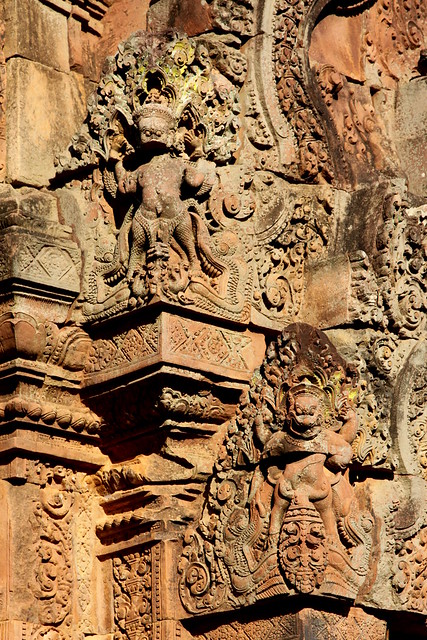
cambodia
Banteay Srei Temple - Treasures of Angkor.
Banteay Srei is a beautiful 10th century Khmer temple complex dedicated to the Hindu god Shiva. Located in the area of Angkor, it lies near the hill of Phnom Dei, 23 miles North of Angkor Wat. Banteay Srei is built mainly of deep red sandstone, a material that lends itself to the elaborate wall carvings which are still well-preserved today. Banteay Srei means Citadel of Women and it is believed that the reliefs on this temple are so delicate that they could only have been carved by the hand of a woman. The relief carvings on the central buildings depict scenes from ancient Hindu myth.
In fact, the buildings are miniature in scale compare to the standards of Angkorian construction. The remarkable craving skills and the red sandstone medium have made the temple very popular with tourists, and is widely praised as the "jewel of Khmer art.”

azerbaijan
Khan's Palace in Sheki (Azerbaijan).
Sheki is famous for the 18th century Khan's summer palace. It was built in 1762 by Hussein khan who was also well known as a poet under his pen-name Mushtag. The two-storied building is decorated with magnificent frescos (one 24 m long) and exquisite stained glass work, known as 'shebeke' (northern part of the city). The Turkish poet Nazim Hikmet wrote: "If there will be no other building in Azerbaijan it will be enough to show Khan Palace to the world". Measuring thirty-two meters by eight and a half meters on the exterior, the palace is a two-story brick masonry structure elongated on the north-south axis and covered with a wooden hipped roof with long eaves. The layout of both floors is identical; three rectangular rooms are placed in a row, separated by narrow, south-facing iwans that provide access to the rooms. The summer residence is renowned for the lavish decoration of its exterior and interior. The façades are covered in tiles with floral and geometrical motives. The interior walls of the residence are covered with frescoes painted during the eighteenth century. Many of the frescoes feature flowers in vases, while a series of paintings on the first floor halls depict hunting and battle scenes. Signatures on frescoes list the names of artists Ali Kuli, Kurban Kuli and Mizra Jafar from Shemaha, Usta Gambar from Shusha, and Abbas Kuli, who may also have been the architect of the summer residence.

russia - moscow
The GUM (Moscow, Russia).
The ornate Neo-Russian facade of GUM, Moscow's "State Department Store", takes up almost the entire eastern side of Red Square. Built between 1890 and 1893 by Alexander Pomerantsev, the building features an interesting combination of elements of Russian medieval ecclesiastical architecture and an elegant steel framework and glass roof, reminiscent of the great turn of the century train stations of Paris and London. This modern 3-story arcade is the largest shop in Moscow and was built to replace the old hall of the Upper Trading Rows, which existed earlier on the same site but burnt down in 1825. The original hall contained some 1,200 separate shops and stalls and was one of Moscow's liveliest markets. After the 1917 Revolution the arcade was nationalized and renamed GUM. Commercial activity continued there until 1928 when the committee in charge of Stalin's First Five-Year Plan took over the building to use as office space. The GUM building was used again in 1932 to display the body of Stalin's wife, Nadezhda, after she committed suicide and was used to assemble the various banners, photographs and Soviet propaganda materials used during parades on Red square.
GUM boasts an elegant turn-of-the-century interior, comprising three parallel arcades centered on a fountain and overlooked by galleries. Light floods in through the building's glass roof and souvenir stands, foreign stores and designer boutiques fill the arcades.
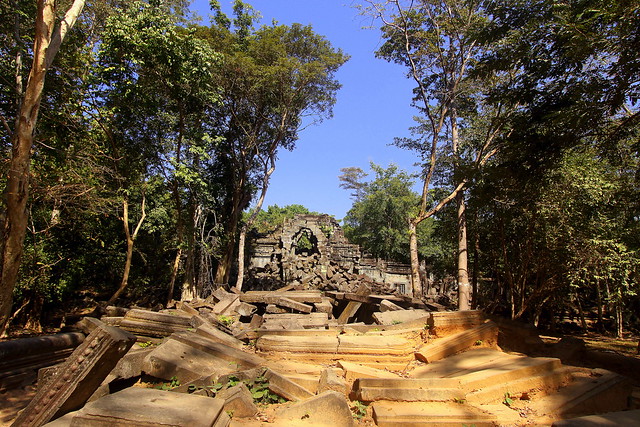
cambodia
Beng Mealea - Treasures of Angkor.
Sixty kilometres from the heart of the Angkor empire in Cambodia lies the ruined temple of Beng Mealea, almost the same size as Angkor Wat but reclaimed by nature a millennium after it was first built.
Beng Mealea is special because it’s one of the Angkor temples that’s been left to be reclaimed by nature, unlike most of the other temples which were restored by the French in the 1800s after centuries of neglect. Beng Mealea is also impressive despite lying in ruins due to its sheer size – from the 1860 drawing by Louis Delaporte you can see that it was built in a similar style and size to Angkor Wat itself, which remains to this day the largest religious monument on the planet.
There’s something very picturesque about walking through the ruins, similar to Ta Phrom in the main Angkor complex, although Beng Mealea is far bigger and has several levels giving different vantage points down into the temple’s heart. Whereas Ta Phrom has its foliage regularly pruned to keep it being completed taken back by the jungle, Beng Mealea is the real thing. Local guides can take you scrambling through the complex to show you the most interesting parts of the fallen masonry and sculpture, many bits of which are hidden away from view. If you want a sense of what it was like for the first French explorers when they discovered Angkor, this would be the nearest you’ll get to it.
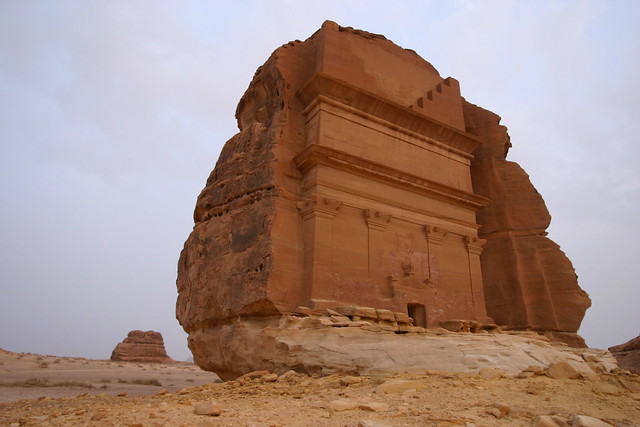
saudi arabia - mada'in saleh
Mada'in Saleh is one of the best known archaeological sites in Saudi Arabia. It was once inhabited by the Nabataeans some 2000 years ago, Petra being the capital of the Nabataean kingdom.
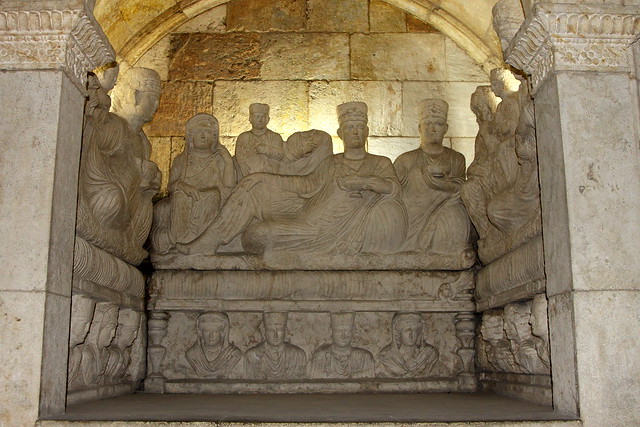
syria
Palmyrene tomb in the National Museum of Damascus.
The National Museum in Damascus, Syria contains a world-class archaeological and
historical collection spread over two wings. Many of the most important finds from excavations throughout Syria are on display here.
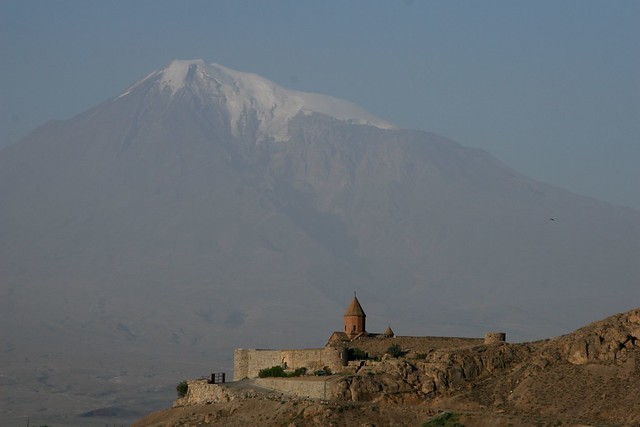
armenia
The Khor Virap Monastery and the mount Ararat.
Khor Virap, along side with Ethmiadzin, Garni and Geghard, is one of the most popular tourist destinations in Armenia. It holds a special place in Armenian history, mainly due to the legend of Grigor Louisavoritch (St. Gregory the Illuminator) who was allegedly imprisoned for 13 years in the dungeon of Khor Virap before curing King Trdat III of a disease, hence paving the way for acceptance of Christianity as state religion in 301.
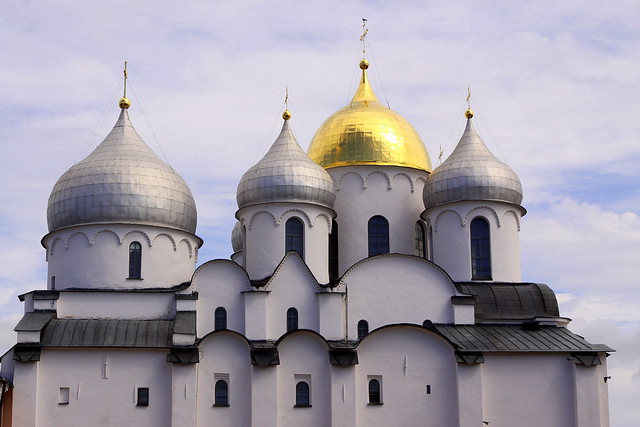
russia - novgorod
The St Sophia's Cathedral (Novgorod).
The St Sophia's Cathedral was built between 1045-1050 inside the Detinets (Kremlin). It is one of the earliest stone structures of northern Russia, a senior contemporary of Notre Dame in Paris, and the cathedrals of Rheims, Amiens, Bamberg and Naumburg. Its height is 38 m. Originally it was taller, for during the past nine centuries the lower part of the building became concealed by the two-metre thick cultural layer. The cathedral was built by Prince Vladimir, the son of Yaroslav the Wise, and until the 1130s this principal church of the city also served as the sepulchre of Novgorodian princes. For the Novgorodians, St Sophia became synonymous with their town, the symbol of civic power and independence. The five-domed church looks simpler but no less impressive than its prototype, the thirteen-domed St Sophia of Kiev. The cathedral exterior is striking in its majesty and epic splendour evoking the memories of Novgorod's glorious past and invincible might. In the 11th century it looked more imposing than now. Its facade represented a gigantic mosaic of huge, coarsely trimmed irregular slabs of flagstone and shell rock. In some places (particularly on the apses), the wall was covered with mortar, smoothly polished, drawn up to imitate courses of brick or of whitestone slabs, and slightly coloured. As a result, the facade was not white, as it is today, but multicoloured. The play of stone, decorative painting and the building materials of various texture enhanced the impression of austere simplicity and introduced a picturesque effect. The two-storied galleries extend along the building's southern, western and northern sides, with a stair-tower constructed at the north-eastern corner. The cathedral has three entrances - the southern, western and northern, of which the western was the main one intended for ceremonial processions.The interior of the cathedral is as majestic as its exterior. It is divided by huge piers into five aisles, three of which end in altar apses.
Despite its name, Novgorod is among the most ancient cities among the Eastern Slavs. The Sofia First Chronicle first mentions it in 859; the Novgorodian First Chronicle mentions it first under the year 862 when it was allegedly already a major station on the trade route from the Baltics to Byzantium. Archaeological excavations in the middle to late twentieth century, however, have found cultural layers dating back only to the late tenth century, the time of the Christianization of Rus and a century after it was allegedly founded, suggesting that the chronicle entries mentioning Novgorod in the 850s or 860s are later interpolations.
| ||
| Home | Thought for The Day | Audio | Videos | Photos | Itinerary | Meditations on Pure Bhakti | Offerings | Services | ||
|

Up

TABLA - FUENTES - FONTS
SOUV2
- SOUV2P.TTF - 57 KB
- SOUV2I.TTF - 59 KB
- SOUV2B.TTF - 56 KB
- SOUV2T.TTF - 56 KB
- bai_____.ttf - 46 KB
- babi____.ttf - 47 KB
- bab_____.ttf - 45 KB
- balaram_.ttf - 45 KB
- SCAGRG__.TTF - 73 KB
- SCAGI__.TTF - 71 KB
- SCAGB__.TTF - 68 KB
- inbenr11.ttf - 64 KB
- inbeno11.ttf - 12 KB
- inbeni11.ttf - 12 KB
- inbenb11.ttf - 66 KB
- indevr20.ttf - 53 KB
- Greek font: BibliaLS Normal
- Greek font: BibliaLS Bold
- Greek font: BibliaLS Bold Italic
- Greek font: BibliaLS Italic
- Hebrew font: Ezra SIL
- Hebrew font: Ezra SIL SR
Disculpen las Molestias

Up
Sankarshan Das Adhikari - ANUAL
Conceptos Hinduistas (1428)SC
Aa-Anc · Aga - Ahy · Ai - Akshay · Akshe - Amshum · Ana - Ancie · Ang - Asvayu · Ata - Az · Baa-Baz · Be-Bhak · Bhal-Bu · C · Daa-Daz · De · Dha-Dry · Du-Dy · E · F · Gaa-Gayu · Ge-Gy · Ha-He · Hi-Hy · I · J · K · Ka - Kam · Kan - Khatu · Ki - Ko · Kr - Ku · L · M · N · O · P · R · S · Saa-San · Sap-Shy · Si-Sy · Ta - Te · U · V · Ve-Vy · Y · Z
Conceptos Hinduistas (2919) SK
Aa-Ag · Ah-Am · Ana-Anc · And-Anu · Ap-Ar · As-Ax · Ay-Az · Baa-Baq · Bar-Baz · Be-Bhak · Bhal-Bhy · Bo-Bu · Bra · Brh-Bry · Bu-Bz · Caa-Caq · Car-Cay · Ce-Cha · Che-Chi · Cho-Chu · Ci-Cn · Co-Cy · Daa-Dan · Dar-Day · De · Dha- Dny · Do-Dy · Ea-Eo · Ep-Ez · Faa-Fy · Gaa-Gaq · Gar-Gaz · Ge-Gn · Go · Gra-Gy · Haa-Haq · Har-Haz · He-Hindk · Hindu-Histo · Ho-Hy · Ia-Iq · Ir- Is · It-Iy · Jaa- Jaq · Jar-Jay · Je-Jn · Jo-Jy · Kaa-Kaq · Kar-Kaz · Ke-Kh · Ko · Kr · Ku - Kz · Laa-Laq · Lar-Lay · Le-Ln · Lo-Ly · Maa-Mag · Mah · Mai-Maj · Mak-Maq · Mar-Maz · Mb-Mn · Mo-Mz · Naa-Naq · Nar-Naz · Nb-Nn · No-Nz · Oa-Oz · Paa-Paq · Par-Paz · Pe-Ph · Po-Py · Raa-Raq · Rar-Raz · Re-Rn · Ro-Ry · Saa-Sam · San-Sar · Sas-Sg · Sha-Shy · Sia-Sil · Sim-Sn · So - Sq · Sr - St · Su-Sz · Taa-Taq · Tar-Tay · Te-Tn · To-Ty · Ua-Uq · Ur-Us · Vaa-Vaq · Var-Vaz · Ve · Vi-Vn · Vo-Vy · Waa-Wi · Wo-Wy · Yaa-Yav · Ye-Yiy · Yo-Yu · Zaa-Zy




No hay comentarios:
Publicar un comentario